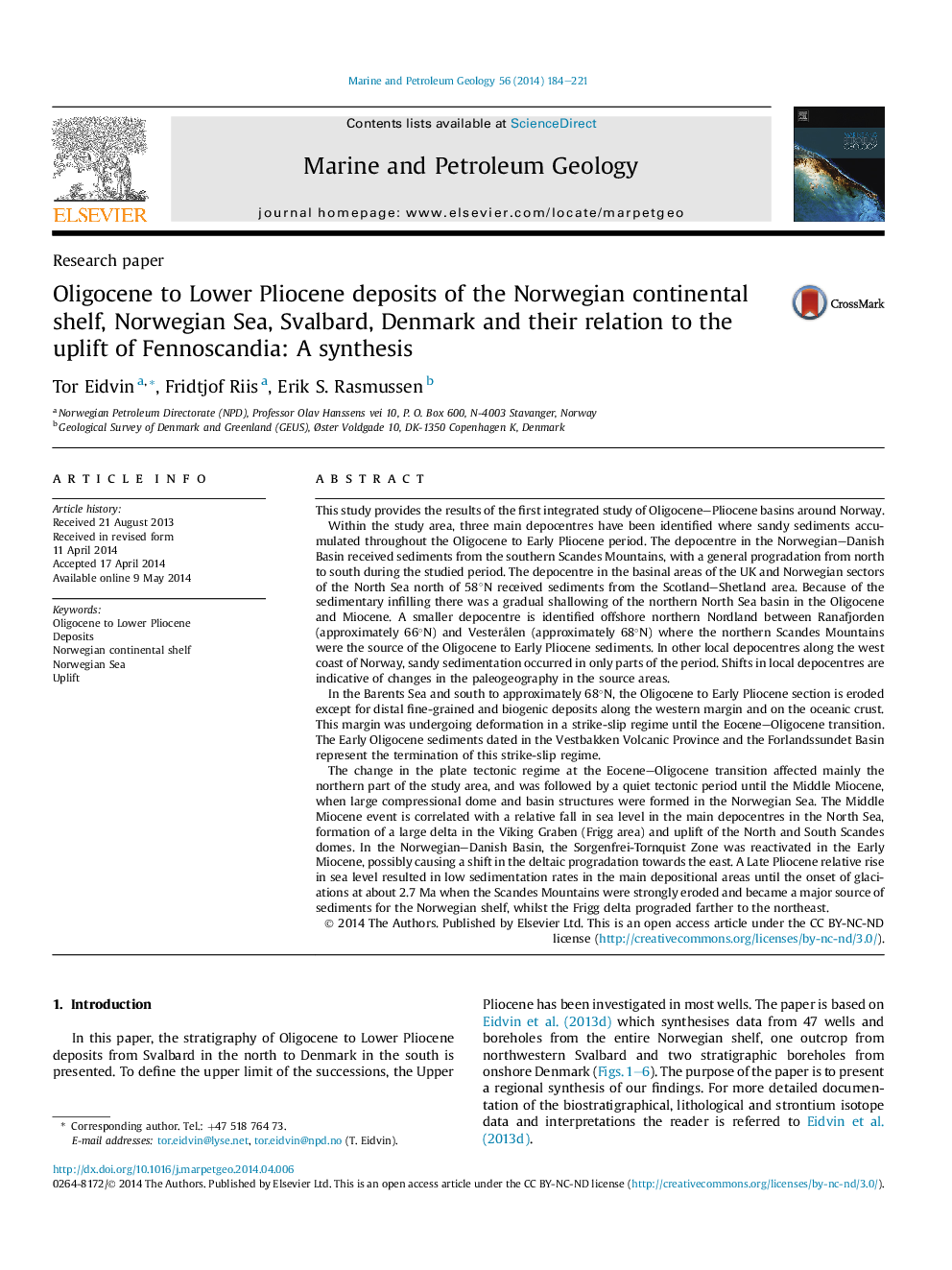| کد مقاله | کد نشریه | سال انتشار | مقاله انگلیسی | نسخه تمام متن |
|---|---|---|---|---|
| 6435284 | 1637168 | 2014 | 38 صفحه PDF | دانلود رایگان |
- First integrated study of Oligocene-Pliocene basins around Norway.
- Data from 51 wells/boreholes from the entire Norwegian shelf and onshore Denmark.
- The wells and boreholes have been integrated with wire-line log and seismic data.
- Emphasis has been placed on sandy deposits.
- The shelf deposits are correlated to the deep-sea record.
This study provides the results of the first integrated study of Oligocene-Pliocene basins around Norway.Within the study area, three main depocentres have been identified where sandy sediments accumulated throughout the Oligocene to Early Pliocene period. The depocentre in the Norwegian-Danish Basin received sediments from the southern Scandes Mountains, with a general progradation from north to south during the studied period. The depocentre in the basinal areas of the UK and Norwegian sectors of the North Sea north of 58°N received sediments from the Scotland-Shetland area. Because of the sedimentary infilling there was a gradual shallowing of the northern North Sea basin in the Oligocene and Miocene. A smaller depocentre is identified offshore northern Nordland between Ranafjorden (approximately 66°N) and Vesterålen (approximately 68°N) where the northern Scandes Mountains were the source of the Oligocene to Early Pliocene sediments. In other local depocentres along the west coast of Norway, sandy sedimentation occurred in only parts of the period. Shifts in local depocentres are indicative of changes in the paleogeography in the source areas.In the Barents Sea and south to approximately 68°N, the Oligocene to Early Pliocene section is eroded except for distal fine-grained and biogenic deposits along the western margin and on the oceanic crust. This margin was undergoing deformation in a strike-slip regime until the Eocene-Oligocene transition. The Early Oligocene sediments dated in the Vestbakken Volcanic Province and the Forlandssundet Basin represent the termination of this strike-slip regime.The change in the plate tectonic regime at the Eocene-Oligocene transition affected mainly the northern part of the study area, and was followed by a quiet tectonic period until the Middle Miocene, when large compressional dome and basin structures were formed in the Norwegian Sea. The Middle Miocene event is correlated with a relative fall in sea level in the main depocentres in the North Sea, formation of a large delta in the Viking Graben (Frigg area) and uplift of the North and South Scandes domes. In the Norwegian-Danish Basin, the Sorgenfrei-Tornquist Zone was reactivated in the Early Miocene, possibly causing a shift in the deltaic progradation towards the east. A Late Pliocene relative rise in sea level resulted in low sedimentation rates in the main depositional areas until the onset of glaciations at about 2.7 Ma when the Scandes Mountains were strongly eroded and became a major source of sediments for the Norwegian shelf, whilst the Frigg delta prograded farther to the northeast.
Journal: Marine and Petroleum Geology - Volume 56, September 2014, Pages 184-221
